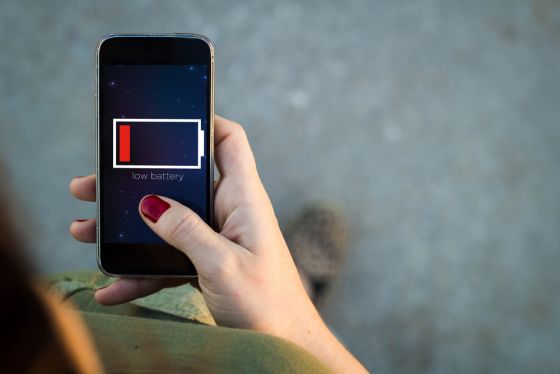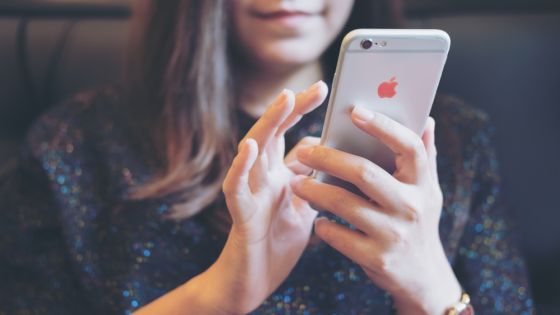New-release smartphones are arriving to market decked out with increasingly immersive displays, ever more powerful cameras and sophisticated software – and, amid this evolving array of features, it is important not to overlook the role of the battery in providing the power required to get through the day.
While these enhanced features improve the user experience, they can also combine to quickly drain battery life, and it is worthwhile ensuring your smartphone’s battery will be up to the task, particularly if you typically go a long time between charges.
When shopping for a new smartphone, it is important to be aware of what sort of battery capacity it offers, along with its charging rates and requirements, and to also keep in mind what sort of care will be required to bolster battery health over the long term.
Meanwhile, when it comes to day-to-day usage, if you need your battery to last for the long haul, there are a number of simple steps that can be taken to reduce unnecessary drain and maximise battery life from one charge to the next.

Battery capacity and charging
Smartphone battery capacity is commonly measured as mAh (milliampere hour), with the greater the mAh, the greater the storage capacity of a battery and the greater its ability to power a smartphone over a period of time.
Manufacturers use the mAh measurement to advertise smartphone battery capacity, with many budget and mid-range smartphones currently available with a capacity of around 3,000-4,000 mAh, while premium models tend to be at the larger end of the scale.
Another feature that should be kept in mind in assessing smartphone battery specs is the sort of charging speeds provided, with many new smartphones now arriving to market with increasingly fast charging capabilities.
Along with long-lasting battery capacity, manufacturers are also focusing on fast-charging speeds, allowing for a battery boost in a short period of time, with flagship devices typically sporting the latest and greatest in fast-charging technologies.

Methods for managing battery usage
From using a web browser, to playing games, to streaming music and video, the range of activities you use your smartphone for will go a long way to determining what sort of longevity your battery provides from one charge to the next.
Meanwhile, your smartphone settings – from the brightness of your screen display, to features such as Wi-Fi, mobile data, Bluetooth and location – can also be a drain on battery, and a few modifications may deliver valuable extra battery life.
Google provides the following tips for Android smartphones (settings can vary by the device and version of Android):
- Change the screen display – including setting a shorter time before the screen automatically turns off (Settings > Display > Advanced > Screen timeout), reducing screen brightness (swiping down from the top of the screen with two fingers and adjusting the slider at the top of the screen) and turning on Adaptive brightness (Settings > Display > Adaptive brightness), which provides for the screen brightness to change according to the light around you.
- Turn off the notification light and manage keyboard settings – turn off the LED notification light if your device has one, and turn off keyboard sound and vibration.
- Restrict apps that use more battery – restricting background battery use by individual apps, with a device potentially recommending which apps to restrict in battery settings and showing which apps use the most battery.
- Keep Adaptive battery and Battery optimisation on – helping apps only use battery when you need them to (Adaptive battery: Settings > Battery > Adaptive battery; Battery optimisation: Settings > Apps & notifications > Advanced > Special app access > Battery optimisation).
- Turn off high-drain features – such as tethering and hotspots when not in use, and setting Wi-Fi to not turn on automatically near saved networks.
- Delete unused accounts – fewer accounts can save battery.
Apple provides the following tips for iPhone and iOS devices:
- Update to the latest software – make sure your device is using the latest version of iOS.
- Adjust screen brightness – dim the screen (Control Centre) or turn on Auto-Brightness (Settings > General > Accessibility > Display Accommodations) to automatically adjust the screen to the lighting conditions.
- Use Wi-Fi – a Wi-Fi connection uses less power to access data than a mobile network.
Apple additionally advises that iOS allows users to see the proportion of battery used by each app at Settings > Battery, with the following messages potentially listed below apps:
- Background activity – shows that the battery was used by the app while it was in the background, with users having the option of turning off the feature that allows apps to refresh in the background at Settings > General > Background App Refresh.
- Location and Background Location – indicating the app is using Location Services, with users able to optimise battery life by turning off Location Services for an app at Settings > Privacy > Location Services.
- Home & Lock Screen – indicating that the Home or Lock screen was displayed, with users able to turn off push notifications for apps that frequently wake the display at Settings > Notifications.
- No Mobile Data Coverage and Low Signal – showing you are in a poor mobile coverage area, with your device searching for a better signal, or that you’ve used your device in low-signal conditions, affecting battery life, with users able to optimise battery life by turning on Aeroplane mode at the Control Centre.
Time to use the battery saver
A convenient option when seeking to manage battery usage is to simply employ a smartphone’s in-built battery saver function, which will implement a number of changes to extend battery life.
Google advises that Android users (dependent upon the version of Android) can swipe down from the top of their device’s screen and tap Battery saver to turn it on and off, while it can also be set to turn on automatically when the battery gets low at Settings > Battery > Battery saver > Set a schedule.
Google advises that when Battery saver is on:
- Apps only refresh content when the user looks at the app.
- Location services stop when the screen is off.
- Apps stop doing things in the background, unless Battery optimisation is turned off.
- The device will stop listening for “Ok Google”.
- Dark theme turns on.
- Some notifications may be delayed.
Apple advises that iPhone users can use Low Power Mode (introduced with iOS 9) to extend battery life, which can be found at Settings > Battery, while an iPhone will notify the user when the battery level goes down to 20 per cent, and again at 10 per cent, providing the option to turn on Low Power Mode with one tap.
Apple advises that when Low Power Mode is on:
- It reduces display brightness, optimises device performance and minimises system animations.
- Apps, including Mail, will not download content in the background.
- Features like AirDrop, iCloud sync and Continuity will be disabled.
- Key functions, including making and receiving phone calls, email and messages, and accessing the internet, can still be used.
Battery care over time
Batteries have a limited lifespan and will naturally degrade over time as they go through the cycle of being used and losing charge and then being recharged.
There are, however, steps users can take to help enhance battery lifespan, such as avoiding exposure to extreme temperatures and using the right charging accessories.
Google recommends Android users:
- Use the power adaptor that came with the device – other adaptors and chargers may charge slowly, not at all, or may damage the device or battery.
- Keep the device cool – the battery will drain much faster when it is hot, even when not in use, and can be damaged.
- Charge as much or as little as needed – it is not required to teach a device how much capacity the battery has by going from full to zero charge and vice versa.
Apple recommends:
- Avoid extreme ambient temperatures – ambient temperatures higher than 35°C can permanently damage battery capacity, while charging a device in high ambient temperatures can damage it further.
- Remove certain cases during charging – certain styles of cases may generate excess heat, potentially affecting battery capacity.
- Store device half-charged when storing long term – a fully discharged battery could fall into a deep discharge state, rendering it incapable of holding a charge, while a fully charged battery may lose some capacity, leading to a shorter battery life. When storing, charge the device to around 50 per cent, power it down to avoid additional battery use, and place it in a cool, moisture-free environment that’s less than 32°C. If storing for longer than six months, charge the device to 50 per cent every six months.
Image credits: Daniel Krason/Shutterstock.com, Georgejmclittle/Shutterstock.com, Farknot Architect/Shutterstock.com


Share this article